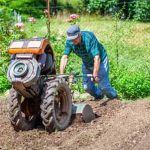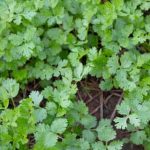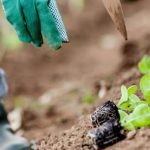Container gardening is a convenient and easy way to grow your own vegetables, even if you have limited space. Whether you live in an apartment or just want to add some greenery to your patio or balcony, container gardening can provide you with a bountiful harvest of fresh and nutritious produce. In this article, we will explore the benefits of container gardening and provide you with essential tips and information for starting your own container garden full of delicious vegetables.
One of the main advantages of container gardening is the ability to control the environment in which your plants grow. This means that no matter where you live, you can create an ideal growing environment for your vegetables. Additionally, container gardening allows for better pest control and less soil-borne diseases, as containers are typically filled with fresh soil that can be tailored to the specific needs of each plant.
When it comes to choosing the right containers for your vegetable garden, there are several factors to consider. From size and material to drainage and aesthetics, selecting the right pots and containers is essential for the success of your garden. Additionally, having the essential supplies and tools on hand will ensure that you are equipped to properly care for your plants as they grow and thrive in their new home.
Choosing the Right Containers
When it comes to easy container gardening vegetables, choosing the right containers is crucial for the success of your garden. The first thing to consider when selecting pots and containers for your vegetable garden is size. Most vegetables require a minimum depth and width for their root systems to grow properly. For example, tomatoes need a container that’s at least 14 inches deep and wide, while lettuce can thrive in a shallower pot.
In addition to size, you’ll want to choose containers that have good drainage. Vegetables in containers are more susceptible to overwatering, so it’s important to ensure that excess water can easily escape. Look for pots with drainage holes at the bottom or plan to drill them yourself if necessary.
Another important factor when selecting containers for your vegetable garden is material. While plastic pots are lightweight and affordable, they may not insulate roots as well as ceramic or terra cotta options. You’ll also want to consider the aesthetic appeal of the containers, as they will be a prominent feature in your outdoor space.
| Container Material | Advantages |
|---|---|
| Terra Cotta | Good insulation for roots; classic look |
| Plastic | Affordable; lightweight |
| Ceramic | Durable; attractive appearance |
By taking these factors into consideration when choosing the right containers for your vegetable garden, you can set yourself up for success and ensure that your plants have the best environment in which to thrive.
Essential Supplies for Container Gardening
When starting a container garden, having the right tools and materials is essential for success. Here are some of the essential supplies you’ll need to get started with your easy container gardening vegetables:
Containers
The first thing you’ll need for your container garden is, well, containers. When choosing containers for your vegetables, opt for pots or planters that are at least 12 inches deep to accommodate root growth. Look for containers made of materials such as plastic, wood, or ceramic that have drainage holes at the bottom to prevent waterlogging.
Potting Mix
Choosing the right potting mix is crucial for the health and growth of your vegetable plants. Look for a high-quality potting mix that is well-draining and lightweight. Avoid using regular garden soil as it can be too dense and may not provide enough aeration for the roots.
Watering Can or Hose
Proper watering is essential for container gardening success, so having a reliable watering can or hose is important to keep your vegetable plants hydrated. Consider investing in a watering can with a narrow spout for precision watering.
Hand Trowel and Pruners
Having a hand trowel and a pair of pruners will make planting and maintaining your container garden much easier. Use the hand trowel for planting seeds or transplants, while the pruners will come in handy for trimming and harvesting your vegetables.
By having these essential supplies on hand, you’ll be well-prepared to start your own easy container gardening vegetables project and enjoy fresh produce right from your own home.
Selecting the Perfect Vegetables
When it comes to easy container gardening vegetables, it is important to choose the right plants that will thrive in a confined space. Luckily, there are many vegetables that are perfectly suited for container gardening. Here are some of the best options to consider:
- Tomatoes: One of the most popular container garden vegetables, tomatoes can be easily grown in pots or hanging baskets. Choose compact or dwarf varieties for smaller spaces.
- Peppers: Both sweet and hot peppers can also be grown in containers, making them an excellent choice for a patio or balcony garden.
- Lettuce and salad greens: Leafy greens like lettuce, spinach, and arugula are ideal for container gardening and can be harvested continuously for fresh salads.
- Carrots: Shorter varieties of carrots do well in deep containers, making them a great option for growing your own root vegetables.
- Herbs: Not technically vegetables, but herbs like basil, parsley, and thyme are easy to grow in containers and add flavor to your cooking.
When selecting vegetables for your container garden, consider the amount of sunlight your space receives and the size of your containers. Most vegetables require at least 6-8 hours of sunlight per day, so be sure to place your containers in a sunny spot. Additionally, choose large enough containers to accommodate the root systems of your chosen vegetables.
It’s also important to consider the climate in which you live. Some vegetables may perform better in cooler temperatures, while others thrive in warmer conditions. Research the specific needs of the vegetables you want to grow before making your selections. With careful consideration and planning, you can create a thriving container garden full of delicious homegrown produce.
Planting and Maintenance
Choosing the Right Soil
When it comes to planting your container garden vegetables, choosing the right soil is crucial for their success. Look for a high-quality potting mix specifically designed for container gardening. Avoid using regular garden soil, as it may not provide adequate drainage and could be too heavy for containers. Additionally, consider adding some organic matter such as compost to enrich the soil and provide essential nutrients for your vegetables.
Planting Your Vegetables
Before planting, make sure to place your containers in a location that receives ample sunlight, as most vegetables require at least 6-8 hours of sunlight per day. When it comes to actually planting your vegetables, follow the spacing guidelines provided on the seed packet or plant label.
If you’re planting from seeds, sprinkle them over the soil surface and then cover lightly with additional soil. For transplants, carefully remove them from their original container and gently loosen the roots before placing them into the prepared soil.
Maintenance and Care
Once your container garden vegetables are planted, it’s important to ensure they receive proper care and maintenance. Watering is key – containers tend to dry out more quickly than traditional gardens, so be sure to water regularly, checking the moisture level of the soil frequently.
Additionally, consider using a water-soluble fertilizer every few weeks during the growing season to provide essential nutrients for your plants. Keep an eye out for any signs of pests or disease, and address these issues promptly to prevent any problems from escalating.
By following these step-by-step instructions for planting and caring for your container garden vegetables, you’ll be well on your way to enjoying a bountiful harvest of fresh produce right at home.
Tips for Success
When it comes to easy container gardening vegetables, there are a few key tips and pieces of expert advice that can help maximize the success of your container garden. From watering and fertilizing to pest control, these essential tips will ensure that your vegetables thrive in their container environment.
1. Watering: Proper watering is crucial for the health of your container garden vegetables. Unlike traditional gardens, containers can dry out quickly, so it’s important to check the soil moisture regularly. Depending on the type of vegetable and size of the container, you may need to water daily or every other day. Be sure to water deeply until you see water coming out of the drainage holes at the bottom of the container.
2. Fertilizing: Container-grown vegetables also require regular fertilization to ensure they have access to essential nutrients. Consider using a slow-release fertilizer or liquid fertilizer diluted to half strength every two weeks during the growing season. This will help promote healthy growth and bountiful harvests.
3. Pest Control: Pests can be a common issue in container gardening, but there are several ways to control them without resorting to harsh chemicals. One effective method is handpicking pests such as caterpillars and aphids from your plants. You can also use natural insecticides like neem oil or introduce beneficial insects like ladybugs that feed on garden pests.
By following these expert tips for watering, fertilizing, and pest control, you’ll be well on your way to successfully growing delicious vegetables in containers. With a little care and attention, you can enjoy a bountiful harvest of fresh produce right from your own patio or balcony.
Harvesting and Enjoying the Fruits of Your Labor
Once your container vegetables have reached maturity, it’s time to harvest and enjoy the delicious produce you’ve worked so hard to grow. But how do you know when each vegetable is ready to be picked? The key is to check for visual cues and follow specific guidelines for each type of vegetable.
For example, tomatoes should be harvested when they are fully colored and firm, while lettuce is best picked before it bolts or flowers. Be sure to research the specifics for each type of vegetable you’re growing in order to ensure a successful harvest.
Once your vegetables have been harvested, there are endless possibilities for how to enjoy them. From fresh salads and stir-fries to grilled skewers and homemade salsas, the options are only limited by your imagination. You can also preserve any surplus produce through freezing, canning, or making pickles and jams. Additionally, using social media like Instagram can provide inspiring recipes that highlight homegrown veggies from other garden enthusiasts.
Remember that harvesting is just one part of the process – proper storage and handling of your vegetables are equally important. Cool, dry places are usually best for storing most types of produce. Proper preparation techniques will also help extend the shelf life of your vegetables and maximize their flavor.
One option you may want to consider is selling or sharing any excess produce with friends, family, or local food banks. Not only does this allow others to enjoy your homegrown produce, but it also helps reduce waste and build community connections.
| Vegetable | Harvesting Guidelines |
|---|---|
| Tomatoes | Harvest when fully colored and firm |
| Lettuce | Pick before it bolts or flowers |
| Cucumbers | Best picked when firm and dark green |
Troubleshooting Common Issues
In conclusion, container gardening vegetables can be a rewarding and fulfilling experience for anyone looking to grow their own produce. The benefits of this method are numerous, including the ability to cultivate fresh vegetables in a limited space, the flexibility to move your garden as needed, and the opportunity to control environmental factors more effectively. With the right containers, essential supplies, and proper plant selection, anyone can start their easy container gardening vegetables.
When it comes to troubleshooting common issues in container gardening, it’s important to stay vigilant and proactive. By closely monitoring your plants for signs of disease or pests and taking quick action to address any problems that arise, you can help ensure a healthy and bountiful harvest. Additionally, being mindful of environmental factors such as sunlight exposure, temperature fluctuations, and watering needs can also play a significant role in maintaining the overall well-being of your container garden.
As you venture into the world of container gardening vegetables, remember that success often comes with experience and patience. Don’t be discouraged by setbacks or challenges along the way – instead, view them as opportunities to learn and improve your skills as a gardener. With dedication and perseverance, you’ll soon be enjoying the delicious fruits of your labor while reaping all the rewards that come with growing your own fresh produce at home.
Frequently Asked Questions
What Is the Easiest Vegetable to Grow in a Container?
The easiest vegetable to grow in a container is lettuce. Lettuce doesn’t need a lot of space, has shallow roots, and thrives in cool weather, making it perfect for container gardening.
What Are Easy Low Maintenance Vegetables to Grow?
Some easy, low-maintenance vegetables to grow include cherry tomatoes, zucchini, and bell peppers. These vegetables are relatively pest-resistant and don’t require a lot of attention or care once established.
What Vegetables Are Easiest to Grow for Beginners?
For beginners, some of the easiest vegetables to grow include radishes, carrots, and green beans. These crops are relatively forgiving, don’t require too much maintenance, and can be grown in various climates and conditions.

If you’re looking to get into vegetable gardening, or are just looking for some tips on how to make your current garden better, then you’ve come to the right place! My name is Ethel and I have been gardening for years. In this blog, I’m going to share with you some of my best tips on how to create a successful vegetable garden.





